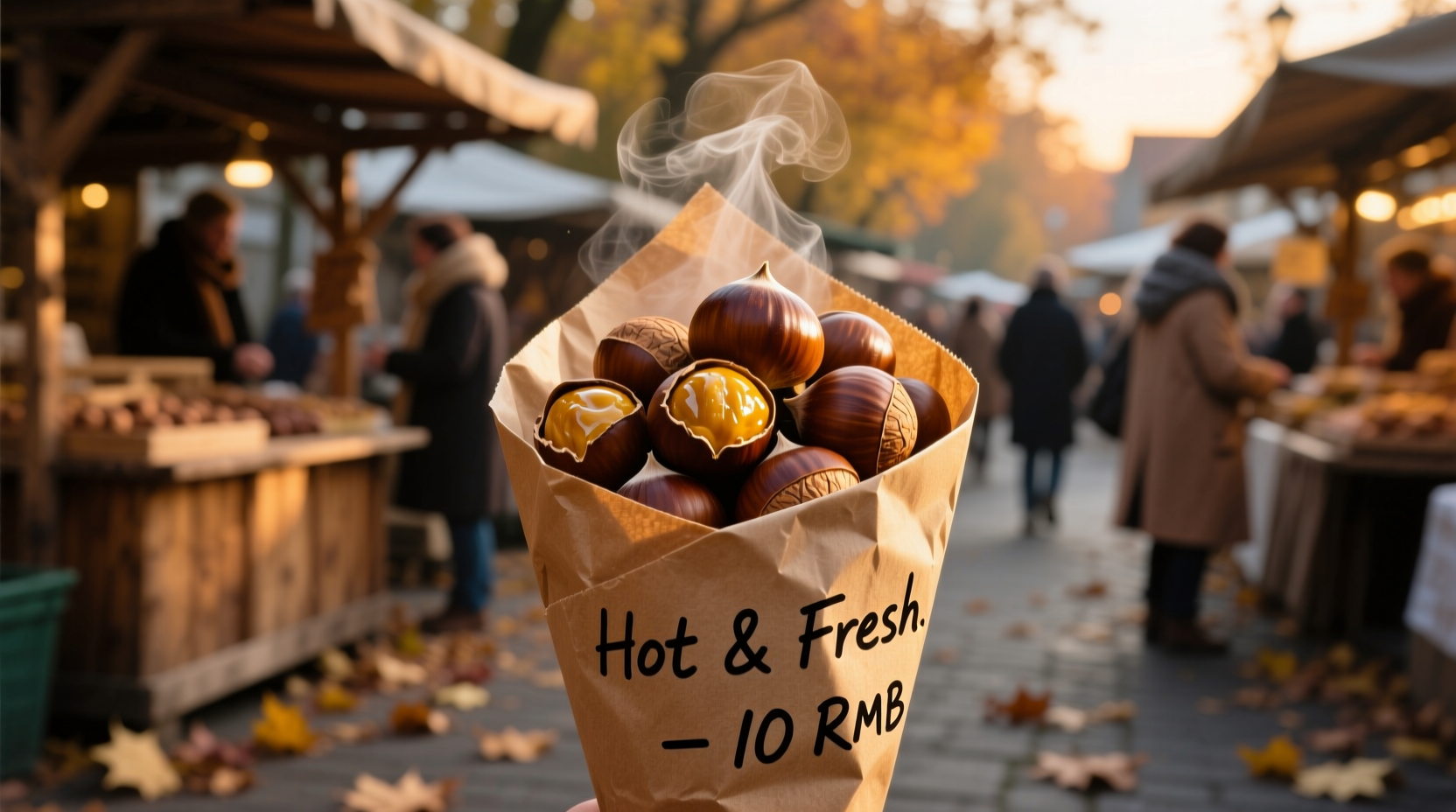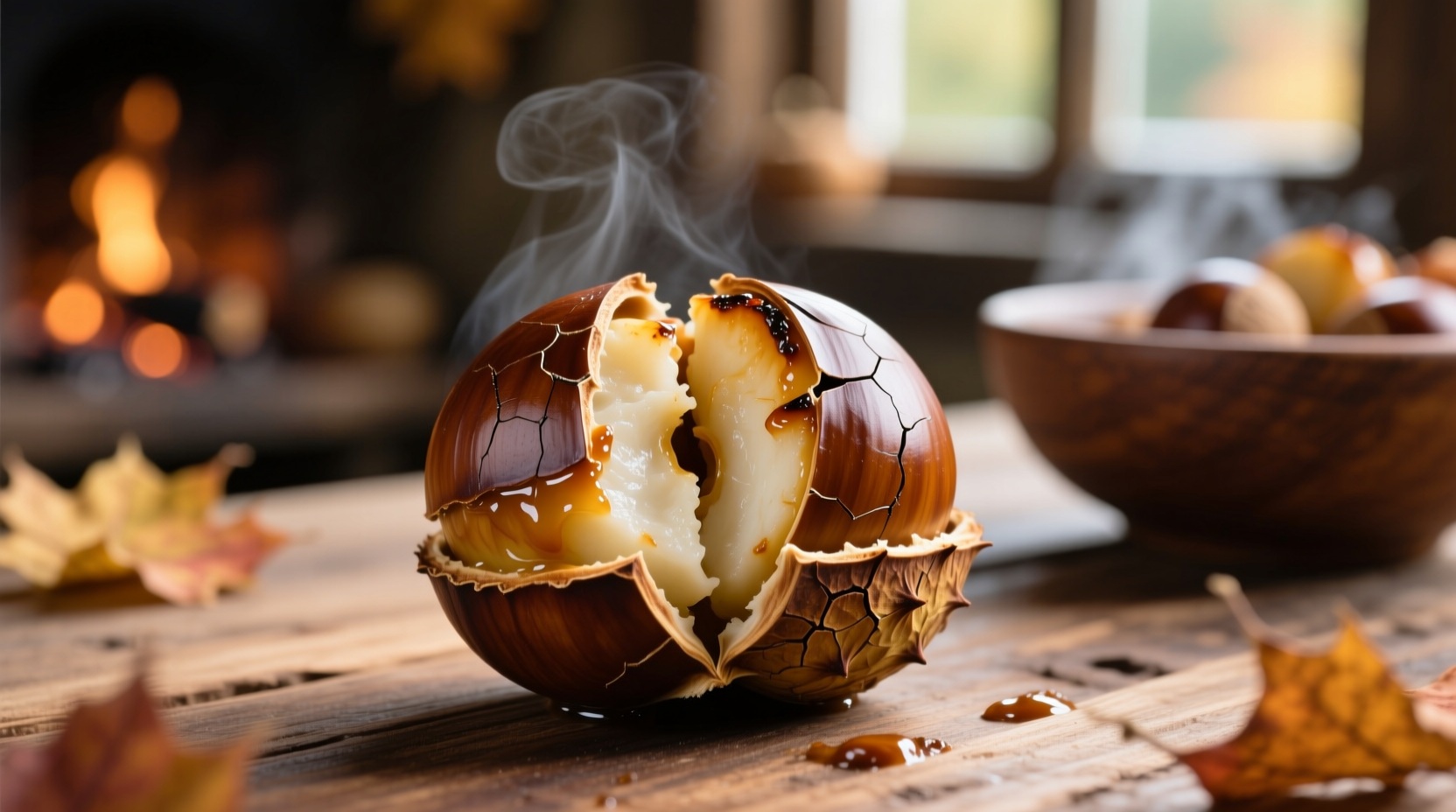The Distinctive Flavor Profile of Chestnuts
When you bite into a perfectly cooked chestnut, you'll experience a delicate sweetness balanced by earthy undertones. The flavor is often described as a harmonious blend of sweet potato, cooked grain, and subtle mushroom notes with a hint of floral aroma. Unlike walnuts or almonds, chestnuts contain significantly less fat (only about 2% compared to 50-70% in other nuts), which gives them a uniquely starchy, almost bread-like quality.
What makes chestnuts truly special is how their flavor transforms with preparation. Raw chestnuts have a bitter, astringent quality and must always be cooked before eating. The magic happens when heat unlocks their natural sugars through caramelization. This chemical reaction creates complex flavor compounds that deliver that signature chestnut sweetness we associate with holiday markets and autumn cooking.
| Nut Type | Flavor Profile | Texture When Cooked | Fat Content |
|---|---|---|---|
| Chestnuts | Sweet, earthy, floral notes | Creamy, potato-like | ~2% |
| Walnuts | Bitter, robust, oily | Firm, slightly crunchy | 65% |
| Almonds | Nutty, slightly sweet | Firm, crunchy | 50% |
| Pecans | Rich, buttery, sweet | Buttery, tender | 72% |
How Preparation Methods Transform Chestnut Flavor
The way you prepare chestnuts dramatically affects their taste experience. Each cooking method creates different chemical reactions that enhance specific flavor compounds:
- Roasting: Creates the deepest caramelization, producing rich, complex sugars with smoky notes. Street vendors' roasted chestnuts develop that distinctive warm, comforting aroma that fills European city streets each autumn.
- Boiling: Yields a milder, more delicate sweetness with subtle floral notes preserved. This method maintains more of the chestnut's natural moisture.
- Steaming: Preserves the most nuanced flavors while achieving the ideal creamy texture without water absorption.
- Drying: Concentrates sweetness significantly, creating an almost candied quality that works well in baking.
Professional chefs like those at France's renowned Le Cordon Bleu culinary institute emphasize that scoring chestnuts properly before cooking prevents bursting and allows optimal steam release, which directly impacts texture and flavor development during the Maillard reaction.

Seasonal Availability and Flavor Peak
Chestnuts follow a precise seasonal timeline that directly impacts their flavor quality:
- September-October: Early harvest chestnuts have higher moisture content and milder flavor
- November-December: Peak season when sugars fully develop, creating the richest, sweetest flavor profile
- January-February: Later harvests become starchier with less pronounced sweetness
The USDA Agricultural Research Service confirms that chestnuts harvested after the first frost develop significantly higher sugar content as the tree converts starches to sugars for winter survival. This natural process explains why December chestnuts consistently deliver the most satisfying flavor experience.
Practical Applications in Cooking
Chestnuts' unique flavor profile makes them incredibly versatile in the kitchen. Their mild sweetness and creamy texture allow them to shine in both sweet and savory applications:
- Savory dishes: Pureed chestnuts create luxurious sauces for poultry and game meats, while diced chestnuts add texture to stuffing and risotto
- Baking: Chestnut flour produces moist cakes with delicate sweetness, perfect for French mont blanc desserts
- Street food: Traditional roasted chestnuts served in paper cones remain popular across European markets
- Preserved forms: Marrons glacés (candied chestnuts) showcase the nut's ability to absorb and complement complex sweet flavors
When selecting chestnuts, look for glossy, firm shells without mold or wormholes. The University of California Cooperative Extension recommends storing fresh chestnuts in a perforated plastic bag in the refrigerator's crisper drawer, where they'll maintain optimal flavor for 2-3 weeks.
Common Misconceptions About Chestnut Flavor
Many people expect chestnuts to taste like other tree nuts, but their botanical classification explains the difference. Unlike true nuts (which are dry fruits with one seed), chestnuts are technically botanical nuts from the beech family with higher carbohydrate content. This fundamental difference creates their distinctive starchy-sweet profile rather than the oily richness of walnuts or pecans.
Another common confusion involves horse chestnuts (conkers), which are toxic and shouldn't be consumed. Edible chestnuts always have a tassel or point on the nut, while poisonous horse chestnuts are smooth and round with no point.











 浙公网安备
33010002000092号
浙公网安备
33010002000092号 浙B2-20120091-4
浙B2-20120091-4